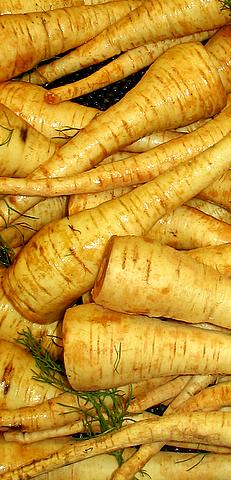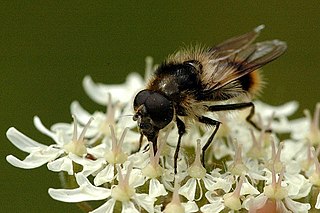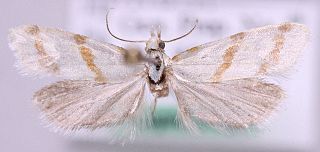
The parsnip is a root vegetable closely related to carrot and parsley, all belonging to the flowering plant family Apiaceae. It is a biennial plant usually grown as an annual. Its long taproot has cream-colored skin and flesh, and, left in the ground to mature, it becomes sweeter in flavor after winter frosts. In its first growing season, the plant has a rosette of pinnate, mid-green leaves. If unharvested, it produces a flowering stem topped by an umbel of small yellow flowers in its second growing season, later producing pale brown, flat, winged seeds. By this time, the stem has become woody, and the tap root inedible.
Sativa, sativus, and sativum are Latin botanical adjectives meaning cultivated. It is often associated botanically with plants that promote good health and used to designate certain seed-grown domestic crops.
Wild parsnip is a common name for several plants and may refer to:
British NVC community MG1, Arrhenatherum elatius grassland, is one of the mesotrophic grassland communities in the British National Vegetation Classification system. This type of plant community was named in 1919 as Arrhenatheretum elatiorisBr.-Bl.. It is a very widespread community throughout the British lowlands of England, Wales and southern and eastern Scotland.

Pastinaca (parsnips) is a genus of flowering plant in the family Apiaceae, comprising 14 species. Economically, the most important member of the genus is Pastinaca sativa, the parsnip.

Euleia heraclei, known as the celery fly or the hogweed picture-wing fly is a species of tephritid or fruit flies in the genus Euleia of the family Tephritidae.

Cheilosia illustrata is a species of hoverfly belonging to the family Syrphidae.

Blepharita amica is a moth of the family Noctuidae. It is found from northern Europe to the Russian plain, the Ural, Siberia, the Amur Oblast, Primorye Region and Kazakhstan. It has also been recorded from the Korean Peninsula, Japan and north-eastern China.

Pachytodes cerambyciformis is a species of beetle belonging to the family Cerambycidae, subfamily Lepturinae.
Depressaria discipunctella is a moth of the family Depressariidae. It is found in the Netherlands, Belgium, Germany, France, Spain, Portugal, Italy, Slovakia, Ukraine, Romania, Bulgaria, North Macedonia and Greece. Outside Europe it has been recorded from Lebanon, Syria and Iran. Formally found in Great Britain, where it was previously widespread.

The parsnip moth or parsnip webworm is a moth of the family Depressariidae. It is found in most of Europe, except Portugal and most of the Balkan Peninsula. This species has also been introduced into New Zealand.

Epermenia chaerophyllella, also known as the garden lance-wing, is a moth of the family Epermeniidae first described by Johann August Ephraim Goeze in 1783. It is found in all of Europe and Asia Minor.

Aethes beatricella, the hemlock yellow conch, is a species of moth of the family Tortricidae. It was described by Walsingham in 1898. It is found in Great Britain, Sweden, Denmark, the Netherlands, France, Spain, Italy, Austria, the Czech Republic, Slovakia, Hungary, Bosnia and Herzegovina, Romania, Ukraine, Russia and Algeria. The habitat consists of waste grounds, woodland fringes and hedgerows.

Aethes dilucidana, the short-barred yellow conch, is a species of moth of the family Tortricidae. It was described by Stephens in 1852. It is found in most of Europe, Algeria, southern Siberia, Kazakhstan, Turkmenistan, Kyrgyzstan and Iran.

Agonopterix clemensella is a moth of the family Depressariidae. It is found in eastern North America, where it has been recorded from Arkansas, Illinois, Indiana, Kentucky, Maine, Michigan, Minnesota, Mississippi, Missouri, Ohio, Oklahoma, Ontario, Pennsylvania, Tennessee, Vermont, Virginia, West Virginia and Wisconsin. The habitat consists of damp woods and meadows.

Phytoecia is a genus of longhorn beetles of the subfamily Lamiinae,

Phytomyza spondylii is a species of leaf miner fly in the family Agromyzidae. The larvae develop inside the leaves of its host plant, making a conspicuous whitish mine. Host plants include Astrantia bieberstedtii, red masterwort Astrantia carniolica, giant hogweed Heracleum mantegazzianum, hogweed Heracleum sphondylium and wild parsnip Pastinaca sativa.

Pammene gallicana is a moth belonging to the family Tortricidae first described by Achille Guenée in 1845.














